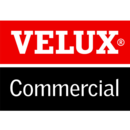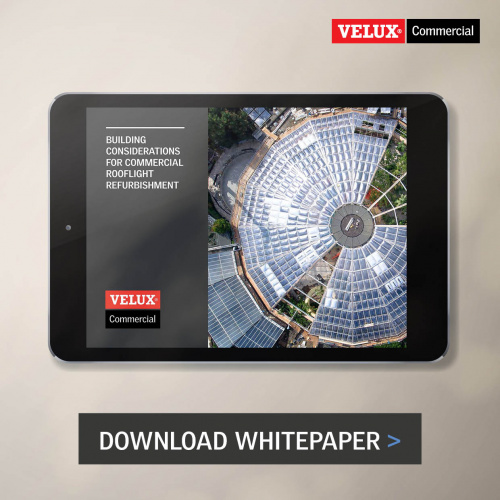Building considerations for commercial rooflight refurbishment
Introduction
Shelter is the primary function of a roof, placing significant demands on the roof structure and its components. As part of a roof, any rooflight solution must be capable of withstanding the elements. Seasonal weather cycles, combined with extreme weather events (which are becoming increasingly frequent), put a lot of strain on components as they age.
Even with regular maintenance and careful repair, roof coverings and rooflight systems eventually need replacing. Rooflight refurbishment can be carried out in isolation, or as part of a wider package of works involving other components like the waterproofing.
Our understanding of the benefits that well-designed rooflight solutions deliver has developed over time. Today, as part of the roof structure, rooflight solutions must contribute to a variety of performance and comfort measures that require a more balanced approach than simply providing functional shelter.
A roof must be considered as part of the whole building design, meaning commercial rooflight refurbishment offers a rare opportunity. It is a chance to significantly enhance the experience of using a building that may have stood for decades, or more than a century in some cases.
With 75% of the buildings in use today forecast to still be in use in 2050, there will be an increasing need for refurbishment design and specification solutions.
VELUX Commercial have produced the white paper 'Building considerations for commercial rooflight refurbishment' to help designers, specifiers, installers and building owners through the refurbishment process and to appreciate the opportunities to enhance daylighting and ventilation through the specification and installation of new rooflight solutions.
Contents
The full white paper contents headings are:
- Introduction
- Factors that influence commercial building refurbishment
- Commercial building types and refurbishment objectives
- Summary
- VELUX Commercial solutions and support
Related articles:
- A guide to daylight design within commercial buildings using bespoke structural glazing solutions
- EN 17037 Daylight in buildings
- Aspects of daylighting design covered by EN 17037
- Types of building EN 17037 applies to
- Designing daylight solutions for commercial buildings
- How to predict daylight conditions in buildings during the design phase
For more information about the specification and installation of new rooflight solutions, please visit the VELUX Commercial website.
--VELUX Commercial 16:39, 06 May 2021 (BST)
Featured articles and news
The benefits of engaging with insulation manufacturers
When considering ground floor constructions.
Lighting Industry endorses Blueprint for Electrification
The Lighting Industry Association fully supports the ECA Blueprint as a timely, urgent call to action.
BSRIA Sentinel Clerk of Works Training Case Study
Strengthening expertise to enhance service delivery with integrated cutting-edge industry knowledge.
Impact report from the Supply Chain Sustainability School
Free sustainability skills, training and support delivered to thousands of UK companies to help cut carbon.
The Building Safety Forum at the Installershow 2025
With speakers confirmed for 24 June as part of Building Safety Week.
The UK’s largest air pollution campaign.
Future Homes Standard, now includes solar, but what else?
Will the new standard, due to in the Autumn, go far enough in terms of performance ?
BSRIA Briefing: Cleaner Air, Better tomorrow
A look back at issues relating to inside and outside air quality, discussed during the BSRIA briefing in 2023.
Restoring Abbotsford's hothouse
Bringing the writer Walter Scott's garden to life.
Reflections on the spending review with CIAT.
Retired firefighter cycles world to raise Grenfell funds
Leaving on 14 June 2025 Stephen will raise money for youth and schools through the Grenfell Foundation.
Key points for construction at a glance with industry reactions.
Functionality, visibility and sustainability
The simpler approach to specification.
Architects, architecture, buildings, and inspiration in film
The close ties between makers and the movies, with our long list of suggested viewing.
SELECT three-point plan for action issued to MSPs
Call for Scottish regulation, green skills and recognition of electrotechnical industry as part of a manifesto for Scottish Parliamentary elections.
UCEM becomes the University of the Built Environment
Major milestone in its 106-year history, follows recent merger with London School of Architecture (LSE).
Professional practical experience for Architects in training
The long process to transform the nature of education and professional practical experience in the Architecture profession following recent reports.


























Comments
[edit] To make a comment about this article, or to suggest changes, click 'Add a comment' above. Separate your comments from any existing comments by inserting a horizontal line.